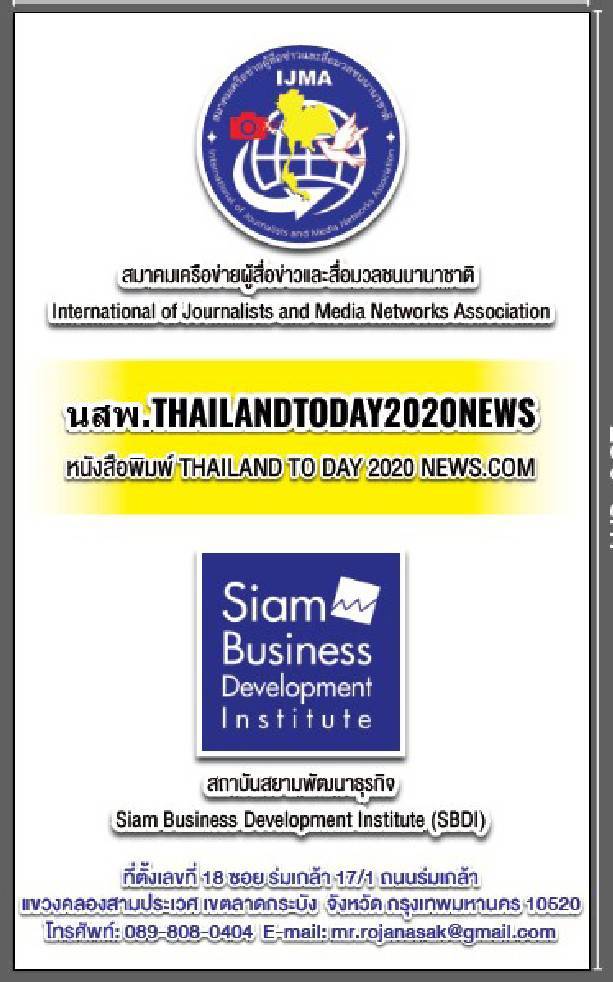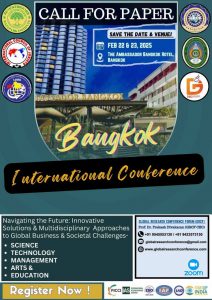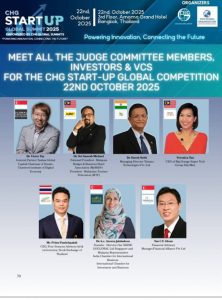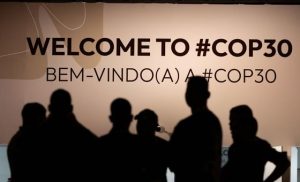
การประเมิน PISA 2022 ทำไมคะแนน PISA ไทยต่ำสุดในรอบ 20 ปี (THAI/ENG)
โปรแกรมประเมินสมรรถนะนักเรียนมาตรฐานสากล หรือ PISA (Programme for International Student Assessment) ริเริ่มโดยองค์การเพื่อความร่วมมือทางเศรษฐกิจและการพัฒนา หรือ OECD (Organisation for Economic Co-operation and Development) มีวัตถุประสงค์เพื่อประเมินคุณภาพของระบบการศึกษาในการเตรียมความพร้อมให้เยาวชนมีศักยภาพหรือความสามารถพื้นฐานที่จำเป็นต่อการดำรงชีวิตในโลกที่มีการเปลี่ยนแปลง โดย PISA ประเมินนักเรียนอายุ 15 ปี ซึ่งถือว่าเป็นวัยที่สำเร็จการศึกษาภาคบังคับ โดยได้ทำการประเมินทุก 3 ปี อย่างต่อเนื่องเพื่อติดตามแนวโน้มการเปลี่ยนแปลงคุณภาพการศึกษาและมุ่งให้ข้อมูลแก่ระดับนโยบาย PISA เน้นการประเมินสมรรถนะของนักเรียนเกี่ยวกับการใช้ความรู้และทักษะในชีวิตจริงมากกว่าการเรียนรู้ตามหลักสูตรในโรงเรียน หรือเรียกว่า “ความฉลาดรู้” (Literacy) ใน 3 ด้าน ได้แก่ การอ่าน คณิตศาสตร์ และวิทยาศาสตร์ การประเมินนักเรียนจะวัดทั้ง 3 ด้านดังกล่าวไปพร้อมกัน แต่จะเน้นหนักที่ด้านใดด้านหนึ่ง ในแต่ละรอบการประเมิน ซึ่งความฉลาดรู้ทั้งสามด้านนี้ถือว่าเป็นสิ่งจำเป็นสำหรับการเรียนรู้ตลอดชีวิตและเป็นสิ่งที่ประชากรจำเป็นต้องมีเพื่อการพัฒนาและการแข่งขันทางเศรษฐกิจของประเทศ
การประเมิน PISA 2022 มีนักเรียนเข้าร่วมการประเมินประมาณ 690,000 คน ซึ่งถือว่าเป็นตัวแทนของนักเรียนอายุ 15 ปี ประมาณ 29 ล้านคน จาก 81 ประเทศ/เขตเศรษฐกิจ สำหรับในประเทศไทย สถาบันส่งเสริมการสอนวิทยาศาสตร์และเทคโนโลยี (สสวท.) ทำหน้าที่เป็นศูนย์แห่งชาติ (National Center) ได้ดำเนินการจัดสอบเมื่อเดือนสิงหาคม 2565 ซึ่งมีนักเรียนกลุ่มตัวอย่างเข้าร่วมการประเมินจาก 279 โรงเรียน ในทุกสังกัดการศึกษา รวม 8,495 คน โดยนักเรียนทำแบบทดสอบและแบบสอบถามด้วยคอมพิวเตอร์ผ่านทางแฟลชไดรฟ์ นอกจากนี้ยังมีการเก็บข้อมูลจากผู้บริหารโรงเรียนผ่านทางแบบสอบถามออนไลน์ด้วย
ผลการประเมิน PISA 2022 ในระดับนานาชาติ
ผลการประเมิน PISA 2022 ในระดับนานาชาติ พบว่า นักเรียนจากสิงคโปร์มีคะแนนเฉลี่ยทั้งด้านคณิตศาสตร์ วิทยาศาสตร์ และการอ่านสูงกว่าทุกประเทศ/เขตเศรษฐกิจที่เข้าร่วมการประเมินในครั้งนี้ สำหรับประเทศที่มีคะแนนสูงสุดห้าอันดับแรกในด้านคณิตศาสตร์ซึ่งเป็นด้านที่เน้นในรอบการประเมินนี้เป็นประเทศ/เขตเศรษฐกิจในเอเชียทั้งหมด ได้แก่ สิงคโปร์ มาเก๊า จีนไทเป ฮ่องกง และญี่ปุ่น ส่วนประเทศสมาชิก OECD มีคะแนนเฉลี่ยด้านคณิตศาสตร์ 472 คะแนน ด้านวิทยาศาสตร์ 485 คะแนน และด้านการอ่าน 476 คะแนน ซึ่งเมื่อเทียบกับ PISA 2018 พบว่า ค่าเฉลี่ยของประเทศสมาชิก OECD ด้านคณิตศาสตร์และการอ่านลดลง ส่วนด้านวิทยาศาสตร์ถือว่าไม่มีการเปลี่ยนแปลงทางสถิติ
ผลการประเมิน PISA 2022 ของประเทศไทย
ผลการประเมินของประเทศไทย พบว่า นักเรียนไทยมีคะแนนเฉลี่ยด้านคณิตศาสตร์ 394 คะแนน ด้านวิทยาศาสตร์ 409 คะแนน และด้านการอ่าน 379 คะแนน ซึ่งเมื่อเทียบกับ PISA 2018 พบว่า คะแนนเฉลี่ยของประเทศไทยทั้งสามด้านลดลง โดยด้านคณิตศาสตร์มีคะแนนเฉลี่ยลดลง 25 คะแนน ส่วนด้านวิทยาศาสตร์และการอ่าน มีคะแนนเฉลี่ยลดลง 17 คะแนน และ 14 คะแนน ตามลำดับ ทั้งนี้ ผลการประเมินของประเทศไทยตั้งแต่ PISA 2000 จนถึง PISA 2022 พบว่า คะแนนเฉลี่ยด้านคณิตศาสตร์และการอ่านมีแนวโน้มลดลง ส่วนด้านวิทยาศาสตร์ถือว่าไม่เปลี่ยนแปลงทางสถิติ
เมื่อวิเคราะห์ตามสังกัดการศึกษาและกลุ่มโรงเรียนที่เข้าร่วมการประเมินครั้งนี้ พบว่า กลุ่มโรงเรียนที่เน้นการเรียนการสอนวิทยาศาสตร์และคณิตศาสตร์มีคะแนนเฉลี่ยทั้งสามด้านอยู่ในระดับเดียวกับกลุ่มประเทศ/เขตเศรษฐกิจที่มีคะแนนคณิตศาสตร์สูงสุดห้าอันดับแรก ส่วนกลุ่มโรงเรียนสาธิตของมหาวิทยาลัยมีคะแนนเฉลี่ยด้านคณิตศาสตร์และวิทยาศาสตร์สูงกว่าค่าเฉลี่ยของประเทศสมาชิก OECD สำหรับกลุ่มโรงเรียนอื่น ๆ ยังคงมีคะแนนเฉลี่ยทั้งสามด้านต่ำกว่าค่าเฉลี่ยของประเทศสมาชิก OECD
จากการเปรียบเทียบคะแนนเฉลี่ยระหว่างนักเรียนกลุ่มสูง (มีคะแนนตั้งแต่เปอร์เซ็นไทล์ที่ 90 ขึ้นไป) กับนักเรียนกลุ่มต่ำ (มีคะแนนต่ำกว่าเปอร์เซ็นไทล์ที่ 10) ของประเทศไทยในทั้งสามด้าน พบว่า นักเรียนทั้งสองกลุ่มมีคะแนนเฉลี่ยในแต่ละด้านแตกต่างกันประมาณ 200 คะแนน และเมื่อเทียบกับ PISA 2018 พบว่า ความแตกต่างของคะแนนด้านการอ่านและด้านวิทยาศาสตร์ของนักเรียนทั้งสองกลุ่มนี้ไม่มีการเปลี่ยนแปลง ส่วนด้านคณิตศาสตร์มีช่องว่างของคะแนนที่แคบลง เนื่องจากนักเรียนกลุ่มสูงมีคะแนนเฉลี่ยลดลงมากกว่าของนักเรียนกลุ่มต่ำ
สำหรับนักเรียนกลุ่มช้างเผือก ซึ่งเป็นนักเรียนที่มีสถานะทางเศรษฐกิจและสังคมอยู่ในกลุ่มล่างสุดของประเทศ (ต่ำกว่าเปอร์เซ็นไทล์ที่ 25) แต่มีคะแนนคณิตศาสตร์อยู่ในกลุ่มบนสุดของประเทศ (เปอร์เซ็นไทล์ที่ 75 ขึ้นไป) พบว่า ประเทศไทยมีนักเรียนกลุ่มช้างเผือกอยู่ 15% ในขณะที่ประเทศสมาชิก OECD มีนักเรียนกลุ่มนี้อยู่ 10% จากข้อมูลดังกล่าวแสดงให้เห็นว่า นักเรียนที่ด้อยเปรียบทางสถานะทางเศรษฐกิจและสังคมก็สามารถมีผลการประเมินที่ดีได้
นอกจาก PISA จะรายงานผลการประเมินในรูปของคะแนนเฉลี่ยแล้ว ยังรายงานผลเป็นระดับความสามารถในแต่ละด้านซึ่งแบ่งเป็น 6 ระดับ โดยที่ระดับ 2 ถือเป็นระดับพื้นฐานที่นักเรียนสามารถใช้ทักษะและความรู้ในชีวิตจริงได้ ผลการประเมินครั้งนี้ พบว่า มีนักเรียนไทยที่มีความสามารถทางคณิตศาสตร์ตั้งแต่ระดับ 2 ขึ้นไปอยู่ 32% ในขณะที่ประเทศสมาชิก OECD มีนักเรียนกลุ่มนี้อยู่ 69% ส่วนประเทศ/เขตเศรษฐกิจที่มีผลการประเมินสูง ได้แก่ สิงคโปร์ มาเก๊า ญี่ปุ่น จีนไทเป และเอสโตเนีย พบว่า มีนักเรียนมากกว่า 85% ที่มีความสามารถทางคณิตศาสตร์ตั้งแต่ระดับ 2 ขึ้นไป สำหรับด้านวิทยาศาสตร์และการอ่าน ประเทศไทยมีนักเรียนที่มีความสามารถตั้งแต่ระดับ 2 ขึ้นไปอยู่ 47% และ 35% ตามลำดับ ส่วนประเทศสมาชิก OECD มีนักเรียนที่มีความสามารถตั้งแต่ระดับ 2 ขึ้นไปอยู่ 76% และ 74% ตามลำดับ
ในภาพรวมของผลการประเมิน PISA 2022 สะท้อนให้เห็นว่า ระบบการศึกษาทั่วโลกมีคะแนนเฉลี่ยลดลงเมื่อเทียบกับ PISA 2018 ซึ่งเป็นผลกระทบจากที่ทุกประเทศต้องเผชิญกับความท้าทายของการจัดการเรียนรู้ในช่วงที่มีวิกฤตการณ์การแพร่ระบาดของโรคโควิด-19 สำหรับระบบการศึกษาไทยยังมีช่องว่างของคะแนนระหว่างนักเรียนกลุ่มสูงกับนักเรียนกลุ่มต่ำที่กว้างมาก แม้ในด้านคณิตศาสตร์จะมีช่องว่างดังกล่าวที่แคบลง แต่เป็นผลมาจากนักเรียนกลุ่มสูงมีการลดลงของคะแนนที่มากกว่านักเรียนกลุ่มต่ำ ดังนั้น จึงควรมีมาตรการในการยกระดับคุณภาพการเรียนรู้ในด้านคณิตศาสตร์ วิทยาศาสตร์ และการอ่าน โดยการพัฒนาครูให้มีสมรรถนะในการจัดการเรียนรู้เพื่อเสริมสร้างให้นักเรียนมีทักษะที่จำเป็นในการนำความรู้ไปใช้ในชีวิตจริง ส่งเสริมและสนับสนุนทรัพยากรและสื่อการเรียนรู้ที่มีคุณภาพให้กับสถานศึกษาอย่างเหมาะสมและเป็นธรรมเพื่อลดช่องว่างของความเหลื่อมล้ำในการจัดการเรียนรู้ รวมทั้งพัฒนาสถานศึกษาทั่วประเทศให้มีคุณภาพและครอบคลุมทุกสังกัด
ล่าสุดเพจ “วันนั้นเมื่อฉันสอน“ โพสต์ข้อความไขข้อสงสัย โดยระบุว่า “ทำไมคะแนน PISA ต่ำสุดในรอบ 20 ปีผมจะตอบให้
1.ครูคนเดียวสอนทุกวิชาไม่ให้ความสำคัญกับวิชาเอก อยู่กับฝันหลอก ๆ ว่าครูทำได้ทุกอย่างโดยที่ไม่สนความจริง เอาครูคณิตไปสอนไทยเอาครูไทยไปสอนอังกฤษ เอาครูอังกฤษไปสอนวิทยาศาสตร์ วิชา พละศึกษาไม่ให้ความสำคัญเล่นไปตามมีตามเกิดเด็กไม่ได้รับการกระตุ้นพัฒนาการด้านกล้ามเนื้อ
2.ครูไม่ครบชั้น ครูคนเดียวสอน 2 ชั้น 3 ชั้น สอนทุกวิชา ทุกชั่วโมงโดยไม่มีหยุดพัก
3.ครูต้องทำทุกอย่างในโรงเรียน เช้ายืนเวร เที่ยงตักข้าว ขายของสหกรณ์ บ่ายแปรงฟันเลิกแถวปล่อยเด็กกลับบ้าน งานภาคสนามซ่อมท่อ ตัดหญ้าไฟฟ้าถ้าไม่มีภารโรงก็ต้องทำ
4.เด็กจะอ่านไม่ออกก็ได้เลื่อนชั้น บางครั้งเด็กไม่ได้เรียนกับครูที่เชี่ยวชาญตรงสาย สุ่มครูผู้สอน วัดดวงกับโชคชะตาไม่ใช่ทุกโรงที่จะมีเอกไทย
5.การทดสอบที่เอื้อให้เกิดการโกงสอบ เช่น ให้ครูคุมเอง ส่งข้อสอบมาให้ก่อนใน RT NT คุมเองตรวจเอง ไม่ได้ออกแบบระบบที่ดี เช่นสอบธรรมมะเอาข้อสอบมาให้ลอกตอบเลย ทำจนเป็นเรื่องปกติ
6.ระบบที่พูดความจริงไม่ได้ หากรายงานตามจริงว่ามีเด็กอ่านไม่ออกเยอะก็ถูกเพ่งเล็ง ปล่อยเกรดให้เกรดสูงจะได้จบปัญหาจนไม่ได้สะท้อนความเป็นจริง
7.เวลาสอนของครูถูกดึงออกนอกห้องเรียนไปทำสิ่งต่าง ๆ เดินขบวน อบรมตรวจเยี่ยมร่วมถ่ายรูป ต้อนรับ ปฏิคม บริการ
8.ความเหลื่อมล้ำและแตกต่างกันของโรงเรียนราวฟ้ากับเหวจำนวนนักเรียนต่อห้องที่มากกว่า 25 คน คุมคุณภาพไม่ได้ ครูไม่มีเวลาตรวจงานหรือตรวจได้ไม่ละเอียดเพราะจำนวนที่มาก
9.จำนวนวิชาที่มากมายแต่ไม่มีครูผู้สอน นึกอยากให้สอนให้เสริมอะไรก็สั่งก็เน้นมาแต่ไม่ส่งคนมาให้ เพิ่มงานไม่เพิ่มคน
10.การเร่งเรียนความยากของวิชา ป.1 เจอข้อสอบที่อ่านแล้วตีความหมายวนไปวนมาจนออกเป็นข่าว แบบเรียนที่ยากบทแรก “ใบโบก ใบบัว” แทนที่จะสอนให้อ่านแบบไม่มีตัวสะกดก่อนเช่น” ตา มา นา” ส่งผลให้เด็กเกิดความเครียด บางคนร้องไห้หากไม่มีผู้ปกครองสอนการบ้าน
11.ครูอนุบาลบางแห่งคนเดียวเลี้ยงเด็ก 3 ระดับ 1-3 ทั้งที่เด็กมีพัฒนาการต่างกันเพราะครูไม่ครบชั้น ลองจินตนาการว่าเด็ก 3 ขวบ 5 ขวบอยู่ในห้องเดียวกันจะสอนยังไงเอาแค่ลูกหลานตัวเองเป็นอย่างไร แต่ครูต้องรับทั้งหมด
12.ครูป.1 จะเป็นใครก็ได้ ไม่มีระบบฝึกหัดมีแต่ระบบจับยัดและคาดหวังว่าครูจะสอนได้ บรรจุใหม่ ย้ายมา จับลงป.1 ให้หมดโดยไม่มีครูพี่เลี้ยง
13.ไม่มีระบบฝึกงานที่ดี การเงิน พัสดุ ต้องทำแต่มหาลัยไม่มีสอน เรียนอีกอย่างทำงานอีกแบบ ลองผิดลองถูกเองงมเอง จนเกิดความเครียดทำให้ครูย้ายมากกว่าจะอดทนต่อสู้กับความบิดเบี้ยวเพราะเปลี่ยนมันไม่ได้
14.ความก้าวหน้าในวิชาชีพที่ไม่ได้ผูกติดกับการสอน สอนดีไม่สู้รายงานดีประเมินเด่น ไม่สอนไม่ติดคุก ไม่ทำเอกสารตามระเบียบติดคุก ไม่มีคนช่วยถนนทุกสายวิ่งมาที่ครู
15.กิจกรรมดึงครูออกนอกห้องเรียนมีมหาศาลมีแต่เพิ่มไม่มีลด ทุกอย่างสำคัญหมด ยกเว้นการเรียนในห้องเดี๋ยวหยุดครึ่งวันเต็มวัน รับนโยบายใหม่แต่ไม่ได้ปล่อยนโยบายเก่า
16.ภาระงานอื่นที่ไม่เกี่ยวกับการสอนเช่น เวรยามไม่เคยยกเลิกได้ ไม่เคยคิดว่ามันเป็นปัญหา ไม่สนว่าประเทศอื่นเป็นอย่างไรวันหยุดครูต้องมาทำสิ่งพวกนี้ยิ่งโรงเรียนเล็กจับหารวันเวรแล้วได้มากเพราะไม่มีคนมาแบ่ง คิดว่าราชการอื่นก็ต้องทำแบบเดียวกันทั้งที่เนื้องานเวรของครูไม่มีนักเรียนเป็นเพียงแค่ยาม สนับสนุนถึงการอยู่เวร แต่เมื่อพูดถึงค่าตอบแทนไม่ให้
17.อาหารกลางวันให้ครูทำ ไม่ทำก็ต้องมีส่วนร่วมไม่ทางหนึ่งก็ทางใด ไม่เตรียมหั่นประกอบก็ต้องทำเอกสาร ไม่เคยตั้งคำถามว่าเมื่อครูต้องไปทำงานข้างนอกครูบางคนต้องไปเบิกเงินที่ธนาคารเวลานั้นใครสอนแทน
18.เด็กพิเศษที่ไม่มีการช่วยเหลือที่ทั่วถึง ครูพี่เลี้ยงเด็กพิการก็สอนเหมือนครูปกติเพราะครูไม่พอจะเอาไปลงแค่เด็กพิเศษไม่ได้เกิดเป็นปัญหาไม่ได้รับการพัฒนาเฉพาะด้านเป็นปัญหาสังคม ก่อกวนและอยู่ร่วมเด็กปกติไม่ได้
19.ไม่มีบุคลากรสายสนับสนุน รัฐไม่กล้าลงทุน ภารโรงธุรการเกษียณตัดตำแหน่ง เมื่อไม่มีคนทำครูก็ต้องมาจัดการ การสอนเอาไว้ทีหลัง ครูสอนควบชั้น ผอ.ควบโรงเรียน ธุรการควบโรงเรียน ภารโรงรอวันตัดตำแหน่ง
20.ครูไม่ได้ต่อสู้แค่กับความไม่รู้ของเด็ก แต่ต่อสู้กับระเบียบ ระบบ เอกสารการประเมิน สำรวจ รายงาน โครงการต่าง ๆ ที่ลงมาโรงเรียนต้องให้เด็กใส่เสื้อสีนั่นนี่เพื่อสร้างภาพเพื่อรายงานตามตัวชี้วัด
21.เทคโนโลยีสนับสนุนการสอนไม่มี ครูใช้เงินส่วนตัวซื้อคอมพิวเตอร์ ไอแพดมาช่วยสอน ปากกาปลั๊กพ่วง ไมโครโฟนอยากสบายหาเองแอพตรวจข้อสอบ เครื่องถ่ายเอกสารดีดี ไม่ได้มีทุกโรงครูต้องหาเครื่องปริ้นเองปริ้นจนเครื่องพัง
22.หวังพึ่งแต่ความเสียสละของครู ครูต้องใช้รถส่วนตัวมาวิ่งรับส่งนักเรียนตามงาน อุทิศเวลาให้ราชการ ไม่ได้มองครูในฐานะมนุษย์
23.การโยกย้าย หล่นหายก่อนได้เติบโต ไม่มีสวัสดิการบ้านพักหลายคนต้องเช่าบ้านอยู่ในโรงเรียนเล็ก ไม่มีแรงจูงใจให้พัฒนา ภาระงานที่หนักเมื่อเจอปัญหาทำได้เพียงอย่างเดียวคือถึงเวลาก็โยกย้าย โรงเรียนเผชิญการเปลี่ยนแปลงทุก 2 ปีขาดความต่อเนื่อง
หลังจากโพสต์ไปไม่นานมีครูเข้ามาแสดงความคิดเห็นจำนวนมาก ส่วนใหญ่เห็นด้วยกับเหตุผลที่ทางเพจวิเคราะห์มา และเรียกร้องให้หน่วยงานที่เกี่ยวข้องเร่งแก้ไขโดยด่วน สบายใจไทยแลนด์



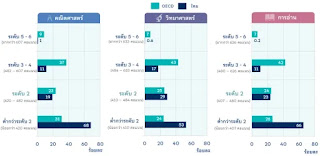
PISA 2022 Evaluation Why is Thai PISA score the lowest in 20 years?
The PISA (Programme for International Student Assessment) program was initiated by the Organization for Economic Co-operation and Development (OECD). The objective of this study is to evaluate the quality of education system in preparing young people with the basic capabilities or abilities necessary to live in a changing world. PISA evaluates 15 years old students who are considered compulsory graduation age by evaluating them every three years. In order to monitor trends in educational quality and inform PISA policy levels, students will be evaluated for real-life knowledge and skills rather than learning according to school curriculums, known as “Literacy” in three areas: reading, math and science. The student assessment will measure all three. These areas are simultaneously focused on one or the other in each evaluation cycle. These three areas of intelligence are essential for lifelong learning and are essential for the country’s development and economic competitiveness.
The PISA 2022 assessment involved approximately 690,Around 29 million 15-year-old students from 81 countries/economic zones represented in Thailand, the Institute for the Promotion of Teaching Science and Technology (SST).) served as the National Center. The examination was held in August 2565 B.E., where a sample group of students participated in evaluations from 279 schools in all educational agencies, including 8,495 students took tests and questionnaires using computers through flash drives. In addition, information from school administrators was collected through online questionnaires.
International PISA 2022 Evaluation Results
The international PISA 2022 assessment found that students from Singapore had an average score in mathematics, science. And higher reading than the top five countries/economic zones. The top five countries in mathematics were Singapore, Macau, Chinese Taipei, Hong Kong and Japan. OECD members scored 472 points on average in math and 485 on science. And on the reading side, 476 points, compared to PISA 2018, it was found that the average of OECD member countries in mathematics and reading decreased. In science, there was no statistical change.
Thailand’s PISA 2022 evaluation results
Thailand’s evaluation showed that Thai students had 394 math scores, 409 science scores and 379 reading scores. Compared to PISA 2018, the average score of Thailand on all three sides was reduced by 25 points, while science and reading were down 17 points and 14. Thailand’s evaluation from PISA 2000 to PISA 2022 shows that the average math and reading scores tend to decrease, while science is not statistically significant.
When analyzing according to the study affiliation and school groups participating in this assessment, it was found that School groups focusing on teaching science and mathematics had the same average score in all three areas as the top five countries/economic zones. The university demonstration school group had higher math and science scores than the OECD member countries’ average for other school groups. The three-sided average was still lower than the OECD average.
The comparison of the average score between high school students (with a percentile of 90 or higher) and low school students (lower than the 10th percentile) in Thailand on all three sides found that both groups had about 200 points difference in average scores compared to PISA 2018. The difference in reading and science scores between these two groups was found to be unchanged. Mathematics had a narrower gap in scores as high students had lower average scores than low students.
For students of the Milky Way group, which are students with socio-economic status in the lowest group of the country (below the 25th percentile). But math scores were in the top group of countries (75 percentile or higher). Thailand has 15 percent of students in the Milky Way, while OECD countries have 10 percent. The data shows that students who are economically and socially disadvantaged can have a good evaluation.
Unless the PISA reports its evaluation results in the form of average scores, The results are divided into six levels. Level 2 is a basic level for students to use real-life skills and knowledge. The evaluation shows that 32% of Thai students with math skills were from 2 or higher, while 69% were from OECD countries and economic zones. SINGAPORE, Macau, Japan, China, Taipei and Estonia saw more than 85% of students with math skills in science and reading. Thailand had 47% and 35%, respectively. OECD member countries had 76% and 74%, respectively.
Overall, the PISA 2022 assessment shows that the average score of education systems worldwide has decreased compared to PISA 2018, as a result of the challenges faced by all countries during the COVID-19 crisis. There is a wide gap in scores between high and low students. Although there is a narrow gap in mathematics, high school students have lower scores than low school students. Therefore, measures should be taken to improve the quality of learning in math, science and reading by improving teachers’ learning ability to enhance their skills necessary for real life. Promote and promote quality learning resources and materials for educational institutions in a fair and appropriate manner to reduce gaps in learning management, as well as develop quality schools nationwide.
The last page, “The Day I Teach You,” posted a suspicious message stating, “Why is PISA the lowest score in 20 years? I’ll answer that.
1. The teacher alone teaches all subjects not to focus on the major, living in a false dream that I can do anything without caring about the truth. Take Math teacher to teach Thai teacher to teach English science. The study does not focus on playing as children are born. It is not stimulated by muscle development.
2. I don’t have a class, I only teach two classes, three classes every hour without a break.
3. I have to do everything in school, morning stand, lunch break, co-op sale, toothbrush out of line and let the kids go home.
4. Children can’t read it, they can be promoted. Sometimes children don’t study with teachers who specialize in the line of teachers. Wat Duang and Fate are not all factories that have Thai majors.
5.Tests that allow cheating, such as having the teacher take charge of the test first in RTNT self-checking, did not design a good system, such as taking the Dharma test to copy it and doing it until it was normal.
6. A system that cannot tell the truth. If it is reported that there are many children who can’t read it, it is aimed at allowing high grades to end the problem without reflecting reality.
7. Teachers’ teaching hours are pulled out of the classroom to do things, march, train, visit, take photos and greet the congregation.
8. The disparity and difference between Rao Fah school and Huay number of students per room is more than 25, quality control is not available. Teachers do not have time to check their work or examine in detail because of the large number.
9. The number of subjects is huge, but there are no teachers. I’d like to ask them to be supplemented.Whatever you order, you don’t send people over, you don’t add people.
10. Accelerating the difficulty of P.D.1 Found a read test and interpreted it back and forth until it came out as news. The first difficult lesson is “Bawbok Bai Bua” instead of teaching to read without spelling first, such as “Tama Mana”, which causes stress for children. Some cry if there is no parent teaching homework.
11. Some kindergarten teachers alone raise three levels of children 1-3, despite the difference in development because teachers do not complete their classes. Imagine how a 3-year-old and 5-year-old child in the same room would teach only their children. But I have to take it all.
12. Who’s teacher number one?All right, no training system, just cramming and expecting teachers to teach, repackaging, moving in and out of the year.1 All Without a Mentor
13. There’s no good internship system, finance, supplies, but there’s no university, another school, another job. Try and be right by yourself until stress causes teachers to move rather than endure the twist because they can’t change it.
14. Progress in a profession that is not tied to good teaching, does not fight good reports, does not teach or go to jail, does not document according to the prison regulations. No helpers on all roads ran to the teacher.
15. There are many activities to pull teachers out of classrooms, but they only increase and decrease. Everything is important except for studying in the class for half a day, taking a new policy but not releasing the old one.
16. Other non-teaching tasks such as guard duty never cancel, never think of it as a problem, not caring about other countries.Teachers have to do these things, the smaller schools are already divided into days because there are no people to share. I think other government departments must do the same even though there are no students as just guards, supporting stay on duty, but when it comes to compensation, don’t give.
17. Lunch for teachers to make, or participate in, or prepare, documents to be made. No question was asked when I had to work outside. Some of them had to withdraw money at the bank at that time.Teach instead.
18. Special children who do not have general help, disabled nannies teach like normal teachers because they can’t afford to put it down. Special children don’t get into trouble. It has not been developed specifically as a social problem, disturbing and unable to live with normal children.
19. There are no support personnel, the government can’t afford to invest. The retired janitor cuts his post. When there is no teacher, he has to manage the teaching later.School control, school control, janitor waiting to be cut off.
20. Teachers are fighting not just with their children’s ignorance, but with regulations, systems, evaluation documents, surveys, reports, projects that come to school to make children wear colored shirts to create images for reporting by measure.
21. No teaching technology. Teachers use personal money to teach their computers, iPads, pens, trailers and microphones to comfort themselves. Examination apps, copying machines are not every school needs to find its own printer until it breaks down.
22. Wishing only for the teacher’s sacrifice, teachers have to use their own cars to transport students according to the work. Dedicating time to government does not view teachers as human beings.
23. The move was lost before it grew. There were no housing benefits. Many had to rent a house in a small school, no motivation to develop. The only hard work when faced with difficulties was the transfer time, and the school faced changes every two years, lack of continuity.
Shortly after the post, a large number of teachers commented. Most agreed with the reason the page analyzed. He also called on related agencies to urgently resolve the matter.



